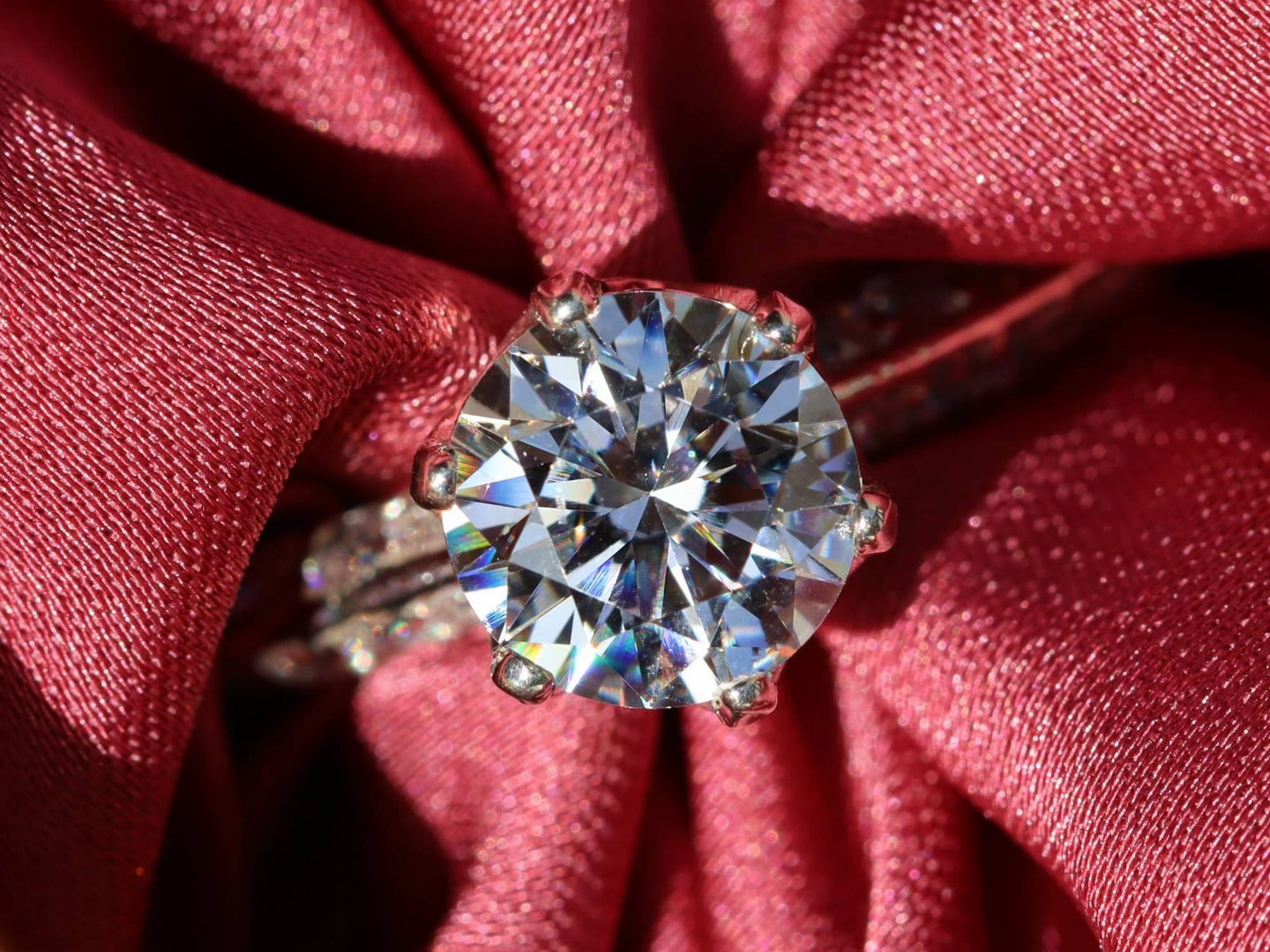A buyer’s guide to ethically sourced diamonds
Yeah, maybe don't DIY this one.

All over the world, gift-giving is a clear sign of love, caring, and respect. And as far as material gifts go, many people consider diamonds to be the physical embodiment of appreciation. These gems are scarce and expensive, but it can be hard to know how to choose a good one or avoid buying one that was mined using exploitative practices. If you feel lost in your quest for the perfect diamond, this is a good place to start.
How to evaluate a diamond
The Gemological Institute of America created the globally-accepted diamond grading standard known as the 4Cs. This method measures four crucial factors that determine the value of a diamond: clarity, cut, carat weight, and color.
Clarity considers the existence and visibility of any internal or external flaws. The cut refers to the choices made by the artisan who shaped the gem from its rough original form, specifically the arrangement and proportions of its flat surfaces (facets). These affect the stone’s ability to reflect light and sparkle. Carat weight is simply the diamond’s physical weight.
[Related: This diamond holds a never-before-seen mineral that can’t exist on Earth’s surface]
Color is a little more complicated, as it only applies to white diamonds and how colorless they are. Diamonds of other colors are far rarer and are assessed differently. When it comes to these stones, professionals look for saturation—the more vivid the color, the more expensive the gem. Those with pink, blue, orange, green, red, and violet hues are rarest and therefore the most valuable.
Assessing a diamond’s quality is a complicated process that’s full of nuances, so it’s hard for shoppers to determine a gem’s value by sight. In general, heavier, clearer stones are more expensive, but you need the guidance of a trained jeweler to get the full story, ideally one with a diploma from the GIA Graduate Gemologist program and/or certification as an Applied Jewelry Professional. These experts will be able to tell you how a particular stone fares with each of the 4Cs and show you the differences between similar specimens. They can also provide or obtain an official diamond grading report from a lab to verify a stone’s quality and value, a protection you should insist on before buying.
Lab-grown diamonds and simulated diamonds
If you’d like to buy a sparkly accessory for yourself or somebody else, but natural diamonds are out of your budget, you can get diamond look-alikes at much lower prices.
Lab-grown diamonds—white or colored—look the same and are chemically identical to the stones that formed more than 3 billion years ago under extreme heat and pressure deep within the Earth’s crust. The difference, of course, is they are made by people in a laboratory. Because there’s no limit to how many can be made, these gems are not as rare as natural diamonds, making them at least 40 percent cheaper.
There are also simulated alternatives such as glass crystals, cubic zirconia, and moissanite. These are chemically different from diamonds and don’t shine as bright, and although an expert jeweler or a lab can tell the difference, casual observers likely won’t be able to.
Knowing your diamond’s source
Humans never would have discovered diamonds if the Earth had not put them within our reach. Magma eruptions push diamond-containing rocks up to near the planet’s surface, where they can be extracted. Large mining companies use high-tech methods for open-pit and underground mining, whereas alluvial mining is done by hand and may be unregulated. When diamonds are mined in a war zone, often by low-paid workers in dangerous conditions, the profits help fund violence, creating a vicious cycle that incentivizes even more violence. Such diamonds are known as blood or conflict diamonds.
One way to know the diamonds you buy are ethically sourced is to look for certification by the Kimberley Process. This seal of approval guarantees a stone was free of conflict during all stages of its production—from mining to polishing, to cutting, to sale. So before you buy a diamond, ask your jeweler to see its certificate and all attached documentation.
[Related: This rare blue diamond is practically a miracle of nature]
The diamond’s country of origin is also important. If you’re dealing with a stone mined in Africa, Botswana is currently one of the best countries to source from because of its strict labor laws and high environmental standards. Canada is another good source for ethically mined diamonds, although these gems are more expensive than African ones mainly because of stricter labor regulations.
If you’re looking for a more sustainable option, you might prefer a recycled or previously-owned diamond. You can find these at antique stores and jewelers specializing in vintage jewelry.
As with any important purchase, the diamond you choose will depend on your taste, but also your budget. Let the jeweler know what you can afford and what your preferences are in appearance and style. Don’t forget to shop around and ask questions. The experts will guide you and help you select a sparkling stone that will suit you and your loved one.
